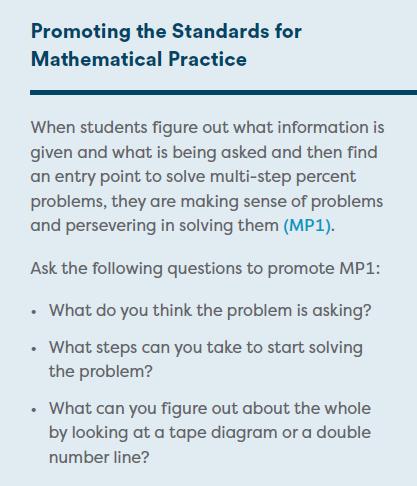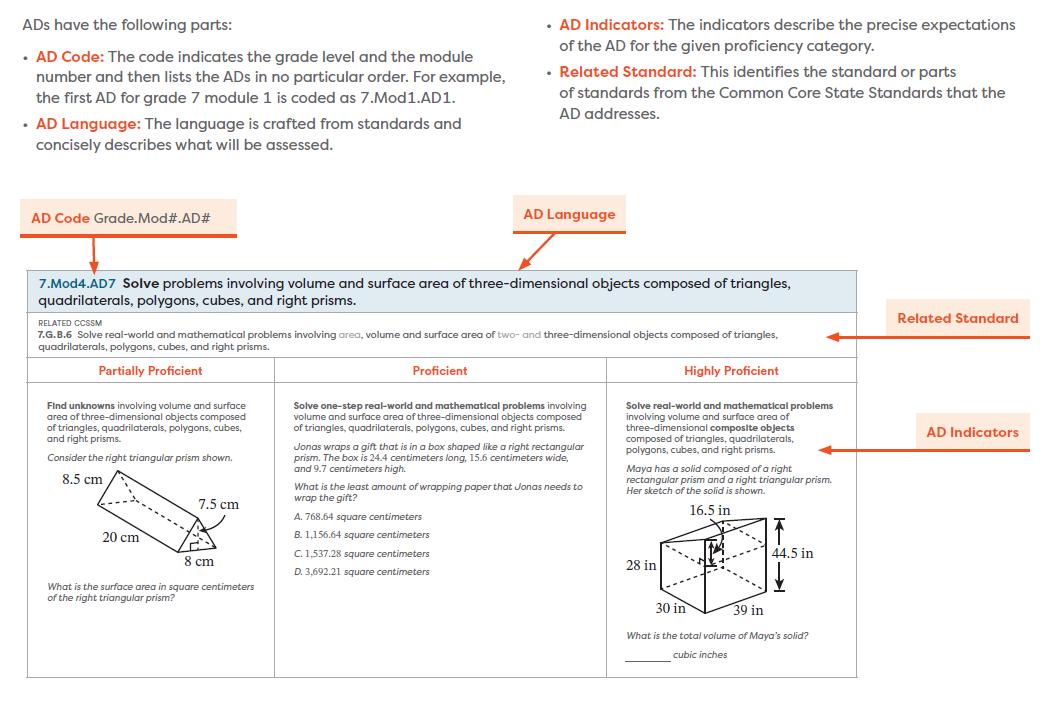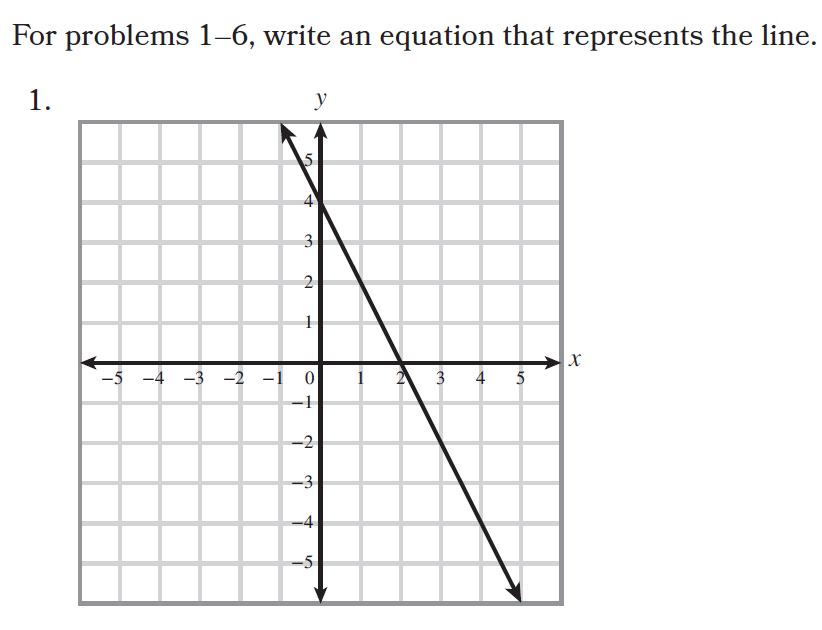Refer to the module map, Appendix A.
C. Curricular materials connect supporting and additional work to major work in meaningful ways. i.
✓
Eureka Math2 lessons and materials make natural connections between different clusters and domains. Whenever possible, the major work of the level is naturally embedded in lessons even when the objective targets supporting or additional work. This natural embedding supports students in making meaningful content connections so that they understand mathematics as a coherent discipline rather than as a series of unrelated topics. For example, the objectives in module 5 of level 6 target supporting work that appears in the geometry domain: solve real-world and mathematical problems involving area, surface area, and volume. However, the necessary calculations in finding area, surface area, and volume also gives students the opportunity to apply their understanding of the major work that appears in The Number Systems domain: Apply and extend previous understandings of numbers to the system of rational numbers, as well as in the Expressions and Equations domain: Apply and extend previous understandings of arithmetic to algebraic expressions and reason about and solve one-variable equations and inequalities.
Curricular materials make natural connections between different clusters and domains.
At times, conceptual understanding of the major work and additional work is developed simultaneously to make connections between domains. For example, in level 7 module 3 topic B, over the course of four lessons, students learn about angle relationships such as complementary angles, supplementary angles, vertical angles, and angles at a point while concurrently writing and solving progressively more difficult equations to find unknown angle measures. Curriculum materials also intentionally make important connections among two or more clusters in a domain. For example, in level 6, the clusters in the Expressions and Equations domain build upon each other as students write and evaluate numerical expressions and then algebraic expressions. Later, students use this understanding to solve equations and conclude that an inequality has infinitely many solutions.
2. Coherence and Instructional Design A.
Curricular materials use a logical mathematical progression to build on learning from prior content.
✓
The Eureka Math2 teacher–writers carefully constructed the curriculum as a logical mathematical story. Rather than separate disjointed skills, the concepts within modules and across levels are intentionally coherent and connected to the larger progression of mathematical concepts over time. Within each lesson, problems and exercises follow an intentional sequence that gradually reduces supports, which promotes student discovery and productive struggle. Through this process, students apply previous knowledge to new learning. A layered approach directs teachers to strategically revisit skills in increasingly complex ways so that students develop proficiency gradually over time. Teacher–writers intentionally sequenced new learning to build on students’ conceptual understanding from previous learning. Embedded professional development helps teachers understand these choices and realize how the content builds on itself. For example, the Why section of the level 6 module 2 Overview answers the question, Why is the topic on factors and multiples at the beginning of the module and not at the end? The section explains why the choice was made to introduce this concept first and how teachers can help students build on and apply this learning throughout the school year. Throughout the modules, teachers will find explicit references to learning from previous grade levels. For example, Module Overviews in the Teach book contain Before This Module and After This Module features, which connect the module’s new learning to that of previous and future modules and grade levels, revealing the coherent structure of the curriculum. For example, in level 8 module 3, students analyze dilations, construct dilations, and learn that similar figures are figures that can be mapped onto one another by using a sequence of rigid motions or dilations. The Before This Module section informs teachers about the work students have already done in level 7 module 1 around scale drawings and in level 8 module 2 around rigid motions. Then, in the After This Module section, the teacher learns how students will use their knowledge of similar triangles to develop an understanding of the slope of a line in level 8 module 4.
© 2022 Great Minds PBC | greatminds.org







